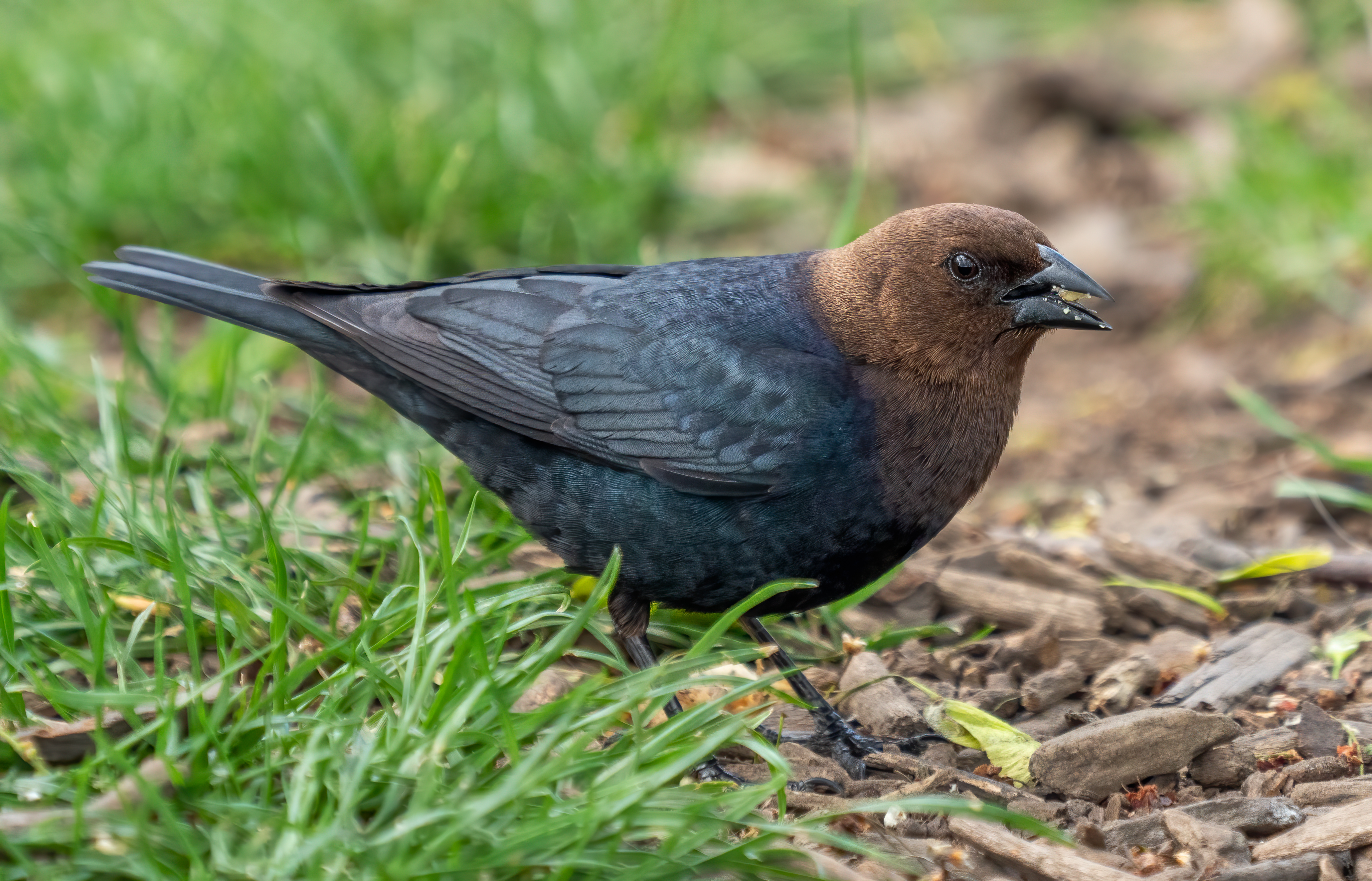On a morning walk, I hear a high-pitched whistle, and a rapid chatter seeming to come from the same tree. My Merlyn Bird ID tells me that what we have here is a brown-headed cowbird (Molothrus ater). He is shiny black on his body with a dull brown head. He’s courting the smaller, drab brown female, enticing her to mate. As she has the potential to lay over forty eggs in a season, he will be pleased to have his genes widely spread if he can woo her successfully.
She’s a wily one. When the egg-laying urge comes upon her a few weeks after mating, she doesn’t get domestic and build a nest like most of her avian cousins. Instead, she will search for an existing nest, preferably with a female who is also in the egg-laying mood. When that female leaves her nest for a minute or two, the cowbird will slip in and lay one egg. She will probably take one of the other bird’s eggs and throw it out of the nest. So when the robin or cardinal or sparrow comes back, she can count the same number of eggs that she left. The cowbird quietly exits, leaving the unsuspecting host bird to raise a cowbird chick along with her own family. The cowbird chick usually grows faster and bigger than her other chicks, and demands more than its share of the food she brings. It gobbles up the other birds’ food for ten or eleven days, then it leaves the nest. Meanwhile, the cowbird gets another yen to lay an egg and does the same thing to another nest over and over until she runs out of eggs. She is known as a brood parasite, leaving others to raise her young. She’s not very particular about who fosters her chicks. Cowbirds have been known to lay their eggs in 220 different species’ nests, and at least 140 of those species have cooperated by fostering the chicks.

Nest Eggs Parasitism of Savannah Sparrow by Brown Headed Cowbird. Photo by Kati Fleming
When she’s not imposing on her neighbors to raise her young, she and her mate are following cattle around, snatching up insects disturbed by the cattle as they graze and move about. Before cattle were available, the cowbirds had the bison herds to provide them with easy pickings. As the bisons’ hooves trampled the prairie grasses, they disturbed the insects living there. That made it easy for the cowbirds to snatch up the insects with their short, conical beaks. They are particularly fond of grasshoppers, caterpillars, beetles, spiders and millipedes but will eat whatever they can catch. They’ll also eat grass and weed seeds. They particularly like sunflower seeds, cracked corn and millet at bird feeders.
Cowbirds like open grassland, urban and suburban spaces and fields and pastures where cattle live. They have actually been increasing in population. As forests are fragmented and more and more land is given over to human development, many forest-dwelling species lose their habitats, but the cowbird’s habitat increases, and so does the population of cowbirds. Their reputation as parasites does not endear them to bird lovers, who blame them for decline in some songbird populations. However, the jury appears to still be out on whether they are the culprits.
Following bison herds, which were always on the move heading for greener pastures, the cowbirds didn’t have time to stop and build a nest, incubate and then rear their young. If they took a month or so out to accomplish this, they’d lose out on the bounty of the bison. The strategy they evolved to get other birds to do the work for them is quite ingenious, especially since the other birds are either too dull-witted to object, or have decided that raising one brown-headed orphan would ensure the safety of their own chicks. I have to give the cowbird credit for so elegantly solving its parenting problem and so gracefully filling a niche that a robin or a wren would be unable to cope with. Meanwhile, the bison are gone, and there are no cows on Owl Acres. The cowbirds will have to look elsewhere for easy pickings. There are nests for brooding songbirds though, and it’s likely that a cowbird egg will find its way into one of them.
Featured photo by Rhododendrites

1 comment